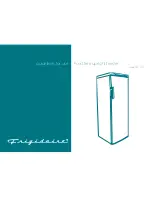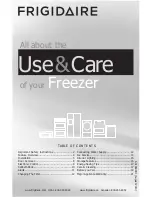
20 - DESTRUCTION OF THE UNIT
Shutting down
■
Separate the units from their energy sources, allow them to cool then drain them completely.
Recommendations for disassembly
■ Handling operations must be carried out by qualified personnel using PPE. The PPE must comply with the safety rules.
■
Use the original lifting equipment.
■ If the signs relating to lifting have been removed (anchoring points, slinging instructions, weight) you must find out this
information.
■
Sort the components according to their material for recycling or disposal, in accordance with regulations in force.
■
Check whether any part of the unit can be recycled for another purpose.
Materials to be recovered for recycling
-
Galvanised carbon steel
-
Stainless steel
-
Copper
-
Aluminium
-
Plastics
-
Polyurethane foam (insulation)
-
Electrical equipment.
-
The electronic board can be recycled by a recovery company (gold, silver).
Fluids to be recovered for recycling
-
Drycoolers: MEG, MPG. Thermal fluid
-
Refrigerant fluid: R404, R407A, R407C, R410A, R134a, R22 depending on the condenser designation
-
Compressor oil
Waste Electrical and Electronic Equipment (WEEE)
■ At the end of its life, this equipment must be disassembled and contaminated fluids removed by professionals and processed
via approved channels for electrical and electronic equipment (WEEE).
-
In France, a partnership has been established with companies for the collection and recovery of professional waste
governed by European Directive WEEE 2012/19/EU. This partnership simplifies the mandatory administrative procedures
and ensures that old equipment is recovered via an official, structured channel. In terms of renovation work in France
(mainland and overseas), for every new unit installed, our partner will collect and dismantle your existing equipment.
Contact us for details of our partners.
-
For other countries, please refer to the legislation in force and the specific solutions available to ensure your waste
is processed legally.
27
Summary of Contents for 09VE
Page 2: ...2...


































